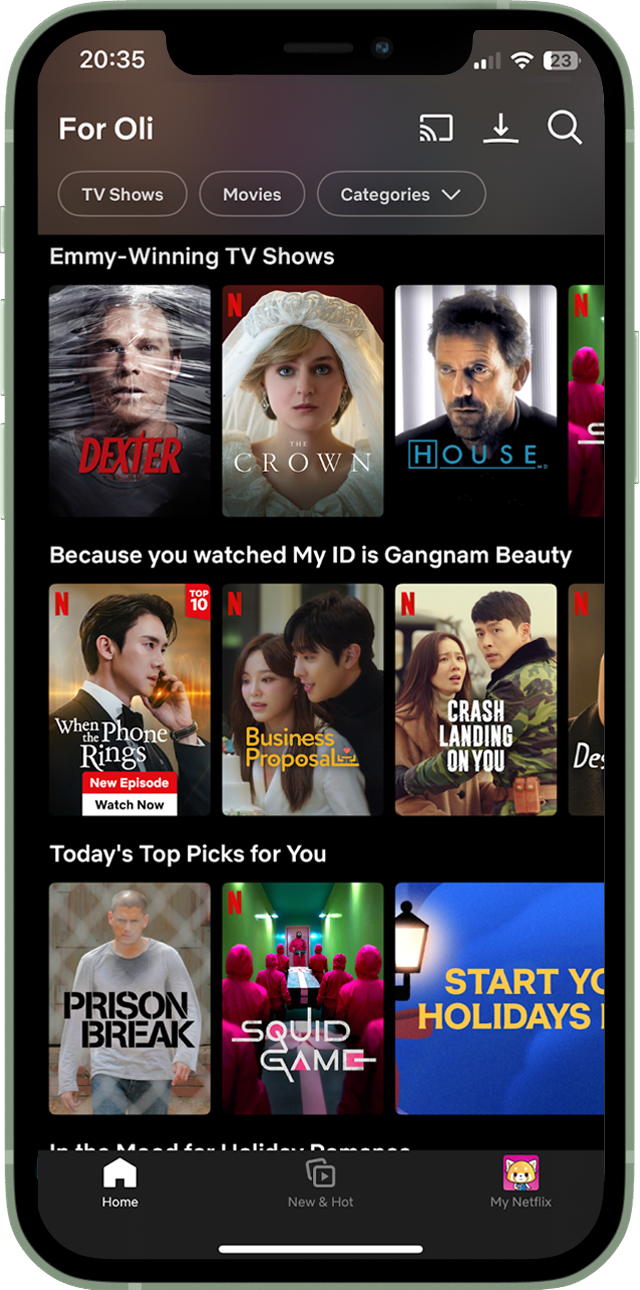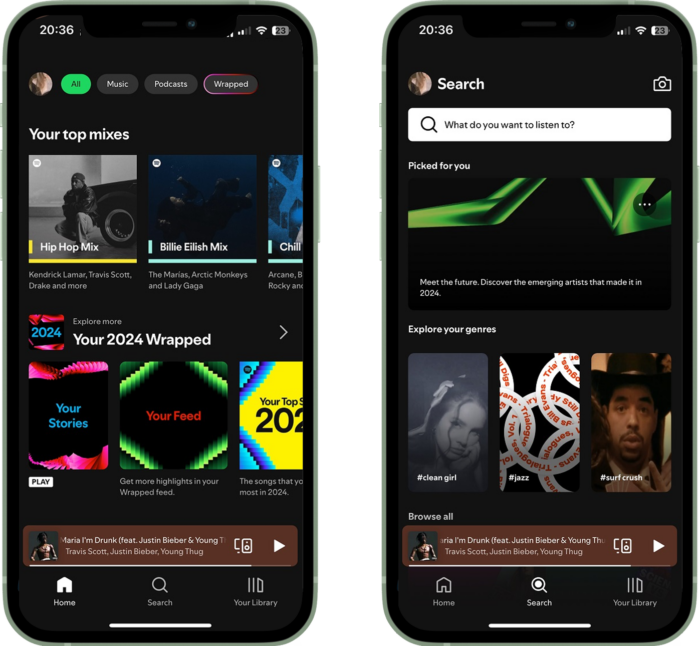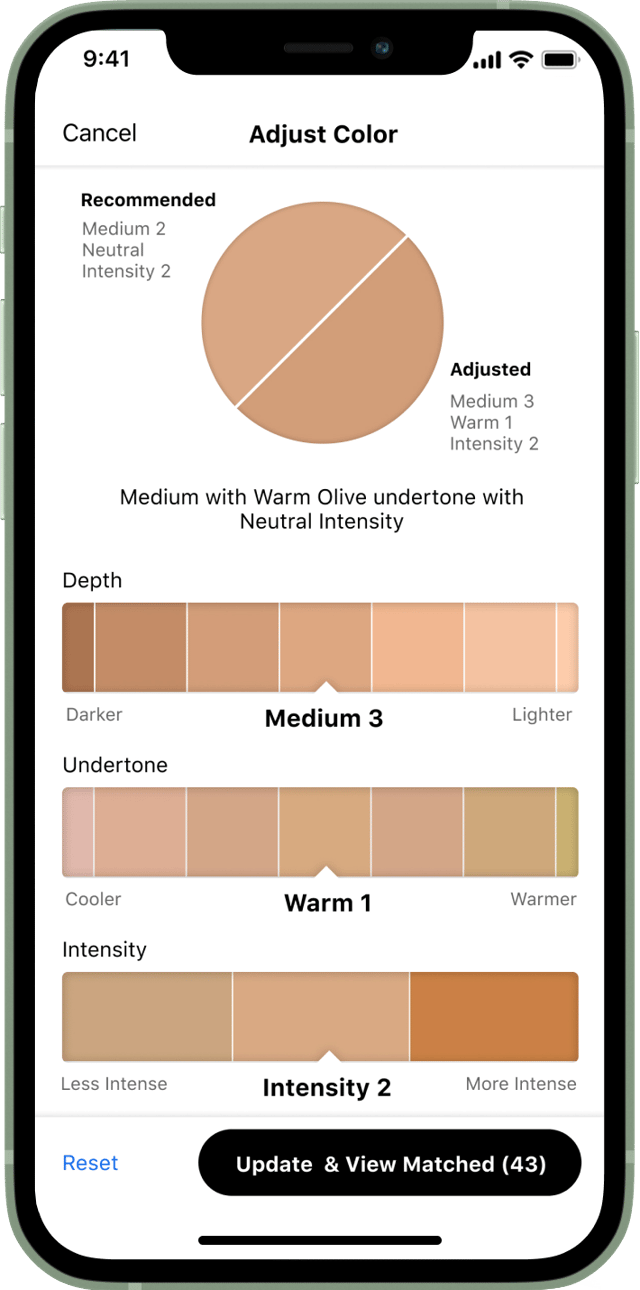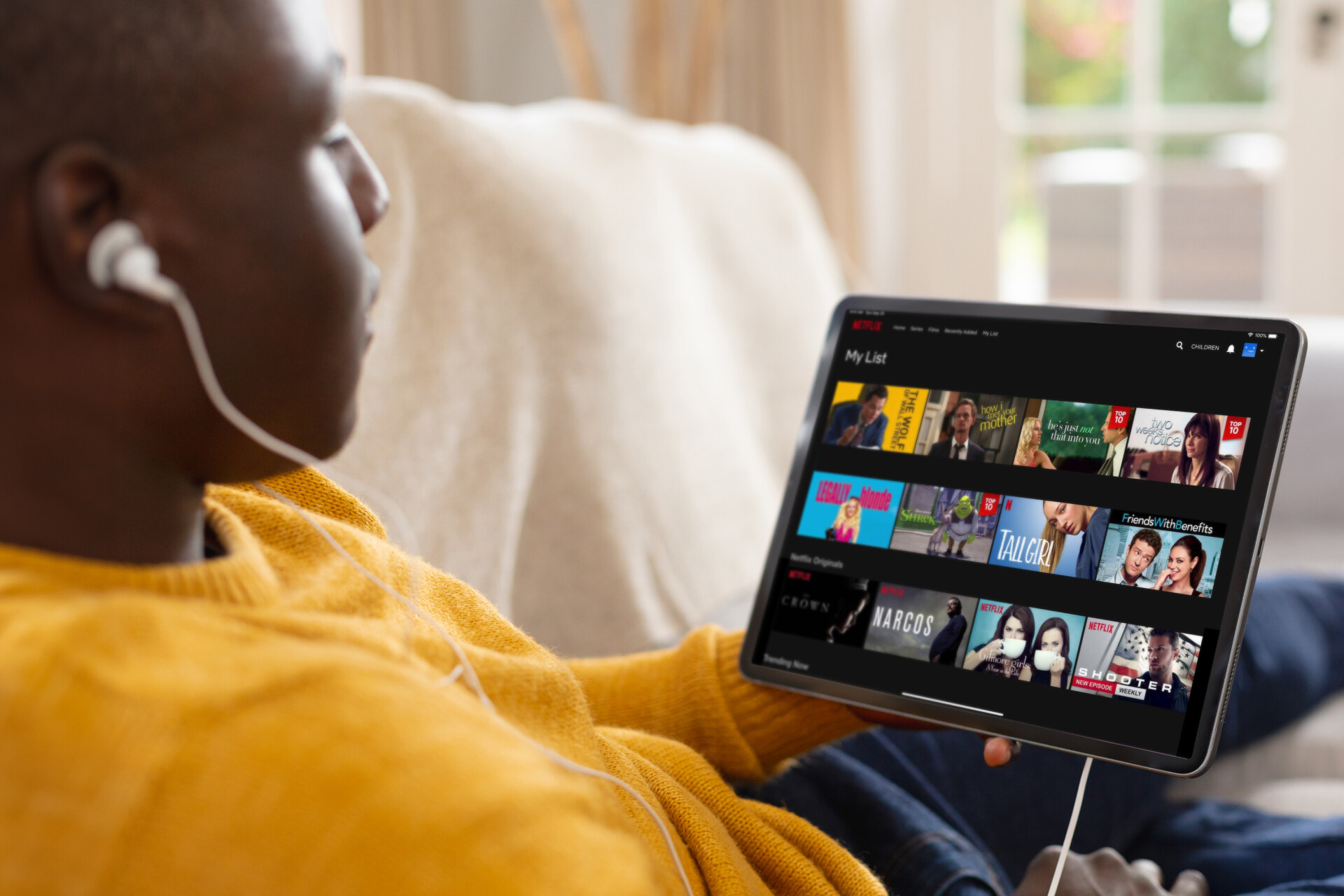Generic marketing just doesn’t cut it anymore. Your customers want your app to understand them–what they like, what they need, and when they need it. That’s where personalization comes in.
Media personalization creates tailored experiences that connect with each customer on a personal level.
Personalization can be applied across various platforms, from emails and websites to entertainment apps and streaming services.
In this article, we’ll explore what media personalization means, why it’s essential for businesses in the media and entertainment industry, and how you can implement it effectively. You’ll also find actionable tips to help you start or enhance your personalization strategy, no matter your role in the industry.
Understanding personalization in media marketing
Perfecting personalization in media marketing means delivering the right message to the right person at the right time. To start with, you need to understand the 4Ds of personalization:
Data
Customer data is the foundation of personalized marketing. It involves collecting and organizing information about your audience to understand their preferences, behaviors, and needs. Key sources include web analytics, social media insights, email marketing platforms, and first-party data from sign-ups or surveys.
Start collecting and leveraging customer data by implementing tracking tools on your app or website. Effective teams also make the most of their CRM software. As a data collection controller, it’s critical to ensure that you comply with privacy regulations such as GDPR and CCPA to maintain trust and transparency.
Demographics
Demographics help you group your audience based on age, gender, location, and interests. These insights allow you to design content that resonates with specific groups. For example, a fitness brand could create separate campaigns for young professionals focusing on quick workouts and retirees focusing on low-impact exercises.
Regularly reviewing demographic data and adjusting your campaigns ensures you stay aligned with evolving audience trends.
Devices
People access media on various devices, such as smartphones, tablets, and laptops. Personalization also means making sure your content works well and looks great on any platform, but especially your audience’s preferred platform.
Focus on responsive design for all your digital marketing efforts. Test your website, application, and emails across different devices to ensure a seamless experience for every user, no matter how they view your content.
Decisions
Once you have data, demographics, and device insights, it’s time to make decisions. Algorithms and analytics tools can predict user preferences and optimize campaigns.
For example, they can recommend products based on past purchases or show customized ads aligned with a user’s browsing history. You can start small with basic decision-making tools, like recommendation engines.
You can then go a step further by developing custom algorithms or integrated machine learning (ML) models for your brand to deliver a more personalized customer experience in real time.
Benefits of media personalization
According to McKinsey’s report, 71% of consumers expect companies to deliver personalized interactions, and 76% get frustrated when this doesn’t happen. This clearly indicates that media personalization is what your customers want.
The whole idea of personalization in any industry is to build meaningful connections that lead to increasing customer lifetime value and the product’s long-term success.
Now, let’s break down its key benefits:
- Boosts customer engagement: Relevant content grabs attention. When customers see personalized ads, emails, or recommendations based on their behavior, they’re more likely to engage. Add some interactive elements like polls or quizzes to enhance potential buyers’ involvement further.
- Improves customer retention: Personalization shows your existing customers you value them, building trust and loyalty. Remembering past browsing or purchase history also creates a sense of familiarity. Simple gestures, like using their name in emails, can strengthen relationships.
- Increases conversion rates: Tailored offers and recommendations drive sales. For example, a well-timed email about a sale on an app feature a customer has viewed can nudge them to buy. Relevant messages increase the chances of turning interest into action.
- Optimizes marketing ROI: Personalization reduces wasted efforts and maximizes Return On Investment (ROI). Targeting the right audience with the right message means you can use your marketing resources more effectively.
- Enhances brand perception: Personalized experiences make brands more memorable and engaging. When customers feel understood, they’re more likely to remember your brand, helping you stand out from competitors and leaving a lasting impression.
Personalization offers significant benefits that are relevant across industries, from retail and finance to media and entertainment. It’s a key driver of the digital transformation in the media industry, helping you deliver value, build loyalty, and stay competitive.
Great ways to personalize marketing
Now that you’ve got the theory down, it’s time to dive into the practical side. Here’s how to craft memorable experiences that truly connect with your audience.
1. Audience segmentation
Not all customers are the same, and treating them as such can backfire. Audience segmentation involves dividing your audience into smaller groups based on factors like gender, age, location, or preferences. This helps you create tailored campaigns that hit the mark.
For example, an entertainment app could segment users by age. Younger audiences might see campaigns promoting trending shows or interactive gaming features. Your older users, on the other hand, could be targeted with content about classic movies or relaxing music playlists.
It’s easier to ensure your messaging is relevant and impactful when it tackles the specific priorities of each group.
2. Chatbot personalization
A chatbot is a virtual assistant designed to simulate conversations with users. Brands often place them on their websites and apps.
Chatbots that instantly answer frequently asked questions, like shipping times or product availability, save users valuable time and reduce frustration. AI chatbots can also provide personalized interactions that feel like one-on-one conversations when they are integrated with customer data correctly.
For example, a chatbot can greet returning users by name, suggest products they’ve viewed, or help them track recent orders. It’s a simple way to make customer support feel more human.
In fact, studies show that 62% of consumers would rather use a chatbot than wait for a human agent, especially for quick inquiries.
3. Personalized videos
Videos are a fantastic way to grab attention, and personalization makes them even better. Sending customers a video that addresses them directly or explains how a product they’re considering can help make your communication stand out.
For example, an online course platform could send a video showcasing course recommendations based on a user’s interests.
Personalized videos often use data-driven techniques, such as dynamically inserting the customer’s name, location, or past interactions into the content. This tactic makes each video feel unique.
Advanced tools like AI-powered video editing software can streamline this process. They enable businesses to scale their personalized marketing video campaigns efficiently. Adding features like clickable Call-To-Action (CTA) buttons or interactive elements within the video can further boost engagement and lead to higher conversions.
4. Personalized promotions and discounts
Everyone loves a good deal, but a personalized discount feels extra special. Offering promotions tailored to individual customer preferences, like a discount on a product they’ve been browsing, makes customers more likely to act. Birthday discounts or special offers for loyal customers are other great ways to make them feel valued.
Advanced analytics tools, such as Google Analytics or CRMs, can help identify patterns in customer behavior. These insights can help you predict the type of promotion that will work best for each user. Common perks include discounts, loyalty rewards, or special offers.
For example, ML algorithms can analyze purchase history and suggest cross-sell or upsell opportunities with personalized discounts. In addition, integrating these offers with email or SMS campaigns ensures they reach the customer at the right time, increasing chances for conversion.
5. Dynamic content
Dynamic content is a powerful personalization technique where content automatically changes based on the user’s behavior, preferences, or demographics. It helps brands deliver more engaging and relevant experiences by tailoring messaging to the specific needs of each individual.
Amazon excels at using dynamic content by recommending products. The marketplace giant shows its visitors targeted offers, adjusting its homepage to reflect their browsing history and purchase behavior.
Dynamic content isn’t limited to websites. It’s also effective in email campaigns, where elements like subject lines, product recommendations, and CTAs can be adjusted in real time.
This ensures every customer receives highly relevant messages that feel personal. Additionally, dynamic content allows you to maintain consistency across all touchpoints, from ads to social media posts.
6. Behavioral targeting
Behavioral targeting takes advantage of data about user actions, such as website clicks, time spent on specific pages, or abandoned shopping carts. This customer data is then used to create more relevant and personalized interactions.
Advanced analytics and automation tools help to anticipate customer needs and respond with tailored solutions to ensure a seamless user experience.
One example of using behavioral targeting is a streaming app that tracks users’ viewing history. If a user frequently watches crime dramas, the app can create a personalized homepage showcasing similar shows or upcoming releases in that genre.
You can also use behavioral triggers to send timely follow-up notifications. For instance, the app might remind users to continue watching a show they’ve paused or suggest new episodes of a series they follow.
Apart from increasing engagement, behavioral personalization helps build trust by showing that your brand understands and values individual preferences.
Trends in media personalization
Customer engagement strategies are constantly evolving, and so are the trends in media personalization. New technologies and approaches continue to push the boundaries of what’s possible.
Here are some of the most exciting current trends in the media industry shaping the future of personalized experiences:
1. AI-powered personalization
We’ve already touched on smart solutions like machine learning (ML) in this article, but let’s dig deeper.
Artificial intelligence (AI), which is at the core of these technologies, has been transforming personalization for a couple of years now. AI analyzes vast amounts of data and predicts customer preferences with impressive accuracy.
AI tools can recommend products, adjust website layouts, or tailor emails based on user behavior as people browse.
For example, in entertainment app development, AI can analyze user preferences, such as viewing habits or favorite genres, to recommend movies, shows, or music. It can also personalize in-app notifications to highlight content users will likely enjoy. This enhances user engagement and retention.
2. Predictive targeting
Predictive targeting uses analytics to anticipate customer needs before they arise. Intelligent software analyzes past interactions to deliver relevant recommendations at the perfect moment.
For instance, you can track your prospect’s activity, such as viewing specific product pages, and predict their interest in a particular feature. This insight allows your marketing team to send targeted content or reach out with a personalized marketing offer.
Predictive targeting is also useful for retention. Signals like reduced platform usage can prompt tailored re-engagement efforts, such as exclusive discounts or check-ins. This proactive strategy keeps customers engaged and strengthens loyalty.
3. The use of Gen AI for personalized content creation at scale
Generative AI apps in media and entertainment are revolutionizing how content is created and personalized. These technologies enable tailored video scripts, automated subtitles, personalized playlists, and even immersive storytelling experiences.
The world of marketing has also been transformed with tools like ChatGPT, which make it possible to generate personalized content at scale.
These tools can create email campaigns, social media posts, and ad copy in minutes, all customized to align with audience preferences. Generative AI analyzes customer data and uses the insights to ensure every interaction feels engaging, relevant, and impactful.
4. Cookie-less personalization
With growing privacy concerns and the anticipated phase-out of third-party cookies, brands are finding innovative ways to personalize without relying on cookies.
Contextual targeting, first-party data, and consent-based tracking are becoming the go-to methods for delivering relevant content while respecting user privacy.
Notably, Google has again postponed the deprecation of third-party cookies in Chrome to 2025, allowing more time for the industry to adapt to these changes.
5. Voice-activated personalized experiences
Voice assistants like Alexa, Siri, and Google Assistant are taking personalization to the next level. They can recognize individual voices and provide tailored recommendations, reminders, or even shopping lists.
Brands are beginning to explore how to integrate these voice-activated tools into their personalization strategies.
You can use voice data to gain deeper insights into your customers. These insights can help you deliver more targeted offers and services through voice-enabled devices.
This growing trend underscores the importance of optimizing content and interactions for voice-first experiences. Yet, many businesses overlook this crucial aspect, which means they’re missing out on opportunities to fully engage their audience.
6. Hyper-personalization through advanced analytics
Hyper-personalization takes personalization to the next level by using advanced analytics to create real-time, tailored experiences for each user. It works by analyzing detailed data about user behavior and preferences to deliver content, recommendations, or offers that feel truly unique.
This trend highlights the growing importance of leveraging big data to create highly accurate and impactful personalization strategies. It helps to ensure every single interaction resonates with the customer.
You can achieve this with custom-developed analytic tools designed specifically for your brand. These tools can be built during your app’s development, taking into account all relevant factors like audience demographics, user interactions, and your business goals.
Tailored analytic modules ensure that your app doesn’t rely on generic analytics solutions but instead delivers insights that are fully aligned with your brand’s needs.
Personalized media marketing examples
Leading brands use app personalization with success. Let’s explore a few standout examples that showcase the power of personalization in action.
Netflix
Have you noticed that every time you log into Netflix, you’re greeted with recommendations tailored to your viewing habits?
That’s a master of personalization.

The app analyzes what you watch, like, or skip and suggests movies and shows that feel handpicked for you. This personalized experience keeps Netflix users coming back and ensures they always have something to enjoy. It’s instrumental in boosting the customer lifetime value (ltv) and brand loyalty.
Spotify
Spotify takes personalization to a whole new level with features like “Discover Weekly” and “Spotify Wrapped.” These playlists are entirely unique to each user, showcasing songs and artists they’re likely to love based on their listening history.

The platform also curates personalized podcast recommendations to help users discover shows that match their interests. The annual Wrapped campaign, in particular, has become a viral sensation that encourages users to share their personalized stats.
Sephora
Sephora uses personalization to enhance both online and in-store shopping. Their app provides tailored product recommendations based on past purchases, beauty quiz results, and browsing history.
In stores, customers can use Sephora’s Color IQ technology to find makeup shades that perfectly match their skin tone.

This seamless integration of online and in-store personalization sets Sephora apart, offering customers a consistent, tailored, and AI-driven experience wherever they shop.
In closing
If you’re just starting with media personalization, the barriers to entry are lower than you might think. With the right functionalities and strategies, your new app can implement personalization and stand out in a crowded market.
By tailoring content, experiences, and interactions to individual preferences, you can build stronger connections, boost loyalty, and achieve measurable results.
Examples of successful personalized marketing include timely recommendations, customized messaging, a voice assistant that remembers user preferences, dynamic content on websites, and personalized push notifications from apps.
One thing is clear: the future of marketing is personal. Embracing media personalization means adopting a customer-first approach that enhances engagement, improves retention, and drives real results.
Now, you’re ready to get started with effective cross-channel personalized media strategies. Your audience is waiting for you to make the first move.




![[header] ai in claims processing top use cases](https://www.miquido.com/wp-content/uploads/2025/05/header-ai-in-claims-processing_-top-use-cases-432x288.jpg)
![[header] dedicated team model advantages & challenges](https://www.miquido.com/wp-content/uploads/2025/04/header-dedicated-team-model_-advantages-challenges-432x288.jpg)
![[header] software nearshoring to poland – an ultimate guide](https://www.miquido.com/wp-content/uploads/2025/03/header-software-nearshoring-to-poland-–-an-ultimate-guide-432x288.jpg)